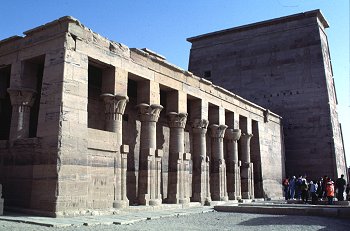This page presents a condensed history of Philadelphia, and is provided only as background information.
From a Short History of Philadelphia (http://www.chillyphilly.com/PhilaHist.html)
In 1681 the Quaker William Penn receives a charter from the crown for a colony on the Delaware River. The original city was laid out like a grid, from the Delaware to the Schuylkill Rivers, and from Cedar Street (now South Street) to Vine Street. Penn sells 40,000 acres to Welsh Quakers, which eventually form the townships of Radnor, Haverford, and Lower Merion.
In 1700 Philadelphia had about 2,000 residents.
In the 1680's many early Philadelphians, including Thomas Wynne, the City's First doctor, live in caves. Within fifty years, the city becomes predominantly brick.
Between 1682 and 1684 Penn offers Delawares (Leni Lenapi) wampum and other gifts (totalling about 1000 pounds) to extinguish their claim to the land in Bucks, Chester, and Philadelphia Counties. Contrary to the Benjamin West painting, there was no single treaty at Shackamaxon (an English corruption of Sachemexon, or "Place of the chiefs").
In 1701 Penn's Frame of Government gives full legislative power to an Assembly, becoming a model for the future U.S. Constitution.
February 1717 is a landmark for Freemasonry. The Grand Lodge of England is formed by the four Lodges existing in London. Anthony Sayre is elected Grand Master during a general meeting held on the next feast day of St. John the Baptist. These events mark the beginning of the modern Masonic fraternity (The Miter and the Trowel).
Six years later, 1723, sees the formalization of the foundations of Freemasonry; the Old Charges are published. This event finalizes the movement of the Craft from its earlier status of an exclusively Catholic body to its present character as a common meeting ground for all who believe in a Supreme Being, however they wish to worship. It also completes the transition from Masonry's Operative beginnings to its present Speculative workings.
Between 1701 and 1751 William Penn's secretary, James Logan, administers the colonies while Penn, and later his sons, are Proprietors. In addition to the skill with which he performs his duties, he is the first of the Renaissance type men who live and work in Philadelphia. He is a polyglot, a scientist, and a mathematician. He becomes rich through the trade of fur, British securities, and real estate. This latter source of wealth is at times obtained through unscrupulous activities (see the Walking Purchase). His Stenton estate in Germantown has the largest library in America at that time.
From 1723 to 1788: 17 year old Benjamin Franklin comes to Philadelphia. He enters the printing trade, but during the next 67 years, he makes major contributions in literature, the natural and social sciences, music, politics, and civic welfare.
In 1755 the state government resided in Philadelphia.
In 1775 delegates of the Second Continental Congress meet in Philadelphia. Congress drafts the "Olive Branch Petition" declaring loyalty to the Crown, which the king refuses to read. Congress then turns its work to independence of the colonies from the crown.
In 1776 the Declaration of the Thirteen United States of America, which is adopted by the convention, marks the formal declaration of independence of the colonies and the beginning of war with England.
In 1787 the Constitutional Convention meets in Philadelphia to adopt a common Federal law for the United States of America.
In 1790 The Federal Capital moves to Philadelphia from New York.
In 1800 the Federal Government moves to Washington.
Some of the oldest maps of Philadelphia go back to Jacques N. Bellin. "Plan De Philadelphie et Environs." From Le Petit Atlas Maritime. Paris, 1764. By 1840 Philadelphia had taken on its basic "bauplan", which has changed little to this day. A detailed and precisely drawn map of Philadelphia by the Society for the Diffusion of Useful Knowledge (SDUK) can be found for sale at Antique Maps of Philadelphia & Environs.
Much of how the city took shape after 1723 when Benjamin Franklin, later a prominent Mason, moved to the city can be attributed to anonymous Masonic engineers and architects.
What is not commonly known is that the architects included esoteric symbols and geometric patterns that reflect ancient Egyptian mythology. Most of these symbols have gone unnoticed or forgotten.
In 1888 Temple University, intended as a "Workingman's University," is chartered by Russell Conwell, the minister of the Grace Baptist Church. The naming of this university "Temple University" was in the mythological traditon of the name Philadelphia, which refers to the Temple of Isis on the Island of Philae, Egypt (relocated to Island of Agilkia in 1972-1980). Philae refers to the birthplace. The Island of Philae was the Mammisi or Birth House of Isis. It therefore represents the symbolic or mythological "womb." Delphia is another name for the Egyptian goddess Isis. Consequently, Philadelphia can be translated as the "Womb of Isis." The significance of this name will unfold in the following sections.


Temple of Isis from Island of Philae, 13th Dynasty to Roman period, c.380 B.C.-2nd century.; now at Agilkia, Egypt. Images borrowed from History of Egyptian Architecture.
All pages Copyright B.Cornet 2001
Date page last updated:
10/06/2022
Contact information: mailto:cornetbruce@yahoo.com